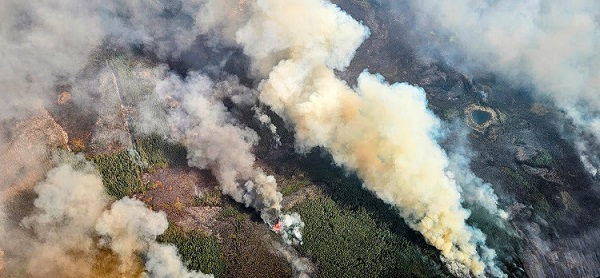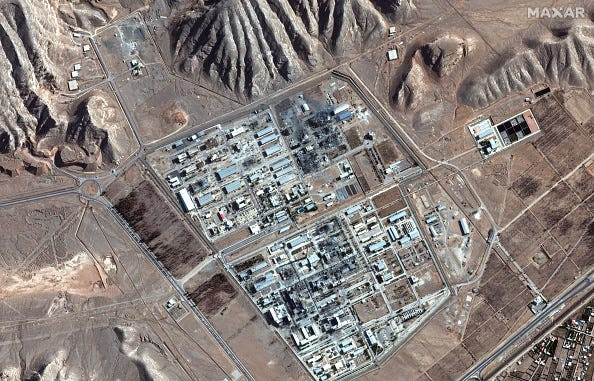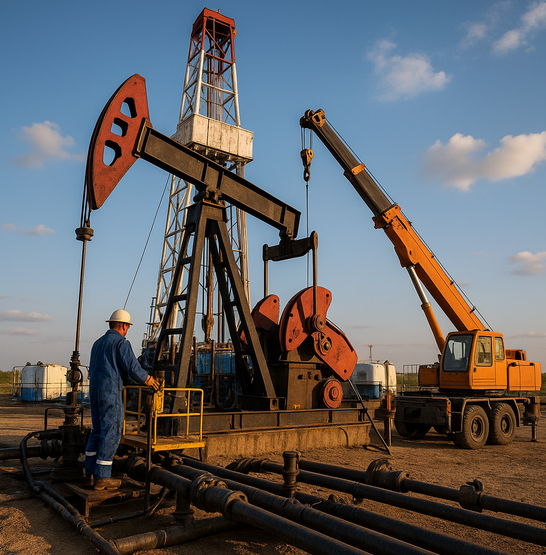Alberta
New teams will boost Alberta wildfire preparedness

Alberta’s government is investing almost $7 million to create six new Wildland Urban Interface (WUI) teams to protect communities at risk from wildfires.
In response to increased wildfire activity in recent years, Alberta’s government is taking action to better safeguard communities and strengthen the way emergencies are responded to. This includes record investments in equipment and personnel, as well as targeted strategies to enhance local firefighting capacity, readiness and resilience.
Alberta’s government is responding proactively to wildfire threats by funding six local fire departments through the Wildland Urban Interface Program to boost wildfire preparedness and response capabilities. This initiative quadruples the number of existing Wildland Urban Interface teams, ensuring a stronger, more coordinated effort to protect communities from potential wildfire emergencies.
“Alberta’s government continues to make critical investments to strengthen the way emergencies are handled. We are effectively quadrupling the number of Wildland Urban Interface teams in Alberta to ensure the safety of Albertans’ businesses, neighbourhoods and critical infrastructure during wildfires.”
“Firefighting teams like this can truly make the difference when it comes to protecting Alberta’s communities. Having more Wildland Urban Interface teams improves our capabilities and adaptability when our wildland firefighting teams are fighting fires across Alberta.”
The Wildland Urban Interface Program targets zones where developments such as homes, farms or industrial sites border or mix with natural vegetation at risk from wildfire. Fires that occur in these transitional areas between forests, grasslands and populated communities are often challenging and demand the expertise of both wildland and structural firefighters. Wildland Urban Interface teams consist of firefighters who have the specialized training and equipment needed to respond to wildfires that enter a community or where developed areas meet wildland areas.
This program is a partnership between the provincial government and local authority fire services and includes funding from Natural Resources Canada. The province is responsible for coordination and funding, while local fire departments contribute personnel, firefighting equipment and resources. The expansion of this program will enhance the overall deployment of specialized resources across the province and improve municipal fire service capacity through additional training and technical support.
“The announcement of almost $7 million in funding to quadruple the number of Wildland Urban Interface teams will strengthen Alberta’s wildfire preparedness and significantly improve safety for Strathmore residents. As the local MLA, I am proud to support the growth of these versatile teams, which are deployed across the province to support municipalities like ours and reinforce our local firefighting capabilities.”
“Strathmore’s firefighters have repeatedly shown their skill, commitment and leadership during emergency deployments. Participation in the WUI Program allows us to strengthen those capabilities, enhance regional partnerships, and help build a sustainable response model for our community and province.”
Each new Wildland Urban Interface Team will receive $1.09 million over two to three years for personnel costs, administrative support, equipment, maintenance and travel costs to help develop and expand the program’s training and operational capacity.
The local authorities receiving funding are:
- Town of Strathmore
- Town of Hinton
- Town of Slave Lake
- Lac La Biche County
- Kee Tas Kee Now Tribal Council
- Kananaskis Improvement District
There are two existing teams based out of Clearwater County and the Town of High Level.
Quick facts
- Funding for the Town of Hinton, Town of Slave Lake, Lac La Biche County and Kee Tas Kee Now Tribal Council is shared equally between Natural Resources Canada and Alberta Forestry and Parks.
- Funding for the teams based in the Town of Strathmore and Kananaskis Improvement District will be provided by the Alberta Emergency Management Agency.
- Each team will receive a total of $1.09 million for a combined total of close to $7 million.
Related information
Alberta
Alberta school boards required to meet new standards for school library materials with regard to sexual content

Alberta’s government has introduced new standards to ensure school library materials are age-appropriate.
School libraries should be safe and supportive places where students can learn and explore without being exposed to inappropriate sexual content. However, in the absence of a consistent standard for selecting age-appropriate library materials, school boards have taken different approaches, leading to concerns about safeguards in place.
In response to these concerns, and informed by feedback from education partners and the public, Alberta’s government has created standards to provide school boards with clear direction on the selection, availability and access to school library materials, such as books.
“Our actions to ensure that materials in school libraries don’t expose children to sexual content were never about banning books. These new standards are to ensure that school boards have clear guidance to ensure age-appropriate access to school library materials, while reflecting the values and priorities of Albertans.”
The new standards set clear expectations for school library materials with regard to sexual content and require school boards to implement policies to support these standards.
Standards for school library materials
Under the new standards, school libraries are not permitted to include library materials containing explicit sexual content. Non-explicit sexual content may be accessible to students in Grade 10 and above, provided it is age-appropriate.
“Protecting kids from explicit content is common sense. LGBTQ youth, like all children, deserve to see themselves in stories that are age-appropriate, supportive and affirming – not in material that sexualizes or confuses them.”
School boards must also regularly review their school library collections, publish a full list of available materials and ensure that a staff member supervises students’ access to school library materials. School boards will have to remove any materials with explicit sexual content from their school libraries by October 1.
School board policies and procedures
All school boards must have publicly available policies that align with the new standards for selecting and managing library materials by January 1, 2026. School boards can either create new policies or update existing ones to meet these requirements.
These policies must outline how school library materials are selected and reviewed, how staff supervise students’ access throughout the school day, and how a student, parent, school board employee or other member of the school community can request a review or removal of materials in the school library. School boards are also required to clearly communicate these policies to employees, students and parents before January 2026.
“A robust, grade- and age-appropriate library catalogue is vital for student success. We welcome the ministry’s initiative to establish consistent standards and appreciate the ongoing consultation to help craft a plan that will serve our families and communities well.”
“Red Deer Public Schools welcomes the new provincial standards for school library materials. Our division is committed to maintaining welcoming, respectful learning spaces where students can grow and thrive. Under the new standards for school libraries, we remain dedicated to providing learning resources that reflect our values and support student success.”
Quick facts
- The new standards will apply to public, separate, francophone, charter and independent schools.
- The ministerial order does not apply to municipal libraries located within schools or materials selected for use by teachers as learning and teaching resources.
- From May 26 to June 6, almost 80,000 people completed an online survey to provide feedback on the creation of consistent standards to ensure the age-appropriateness of materials available to students in school libraries.
Related information
- Ministerial Order
- School library standards engagement
- Reference Materials: Content warning: this document contains graphic content that may be disturbing to viewers and is not appropriate for young viewers. Viewer discretion is advised.
Alberta
Fourteen regional advisory councils will shape health care planning and delivery in Alberta

Regional health councils give Albertans a voice
Albertans want a health care system that reflects where they live and adapts to the unique needs of their communities. As part of the province’s health care refocus, Alberta’s government committed to strengthening community voices by providing more opportunities for Albertans to bring forward their local priorities and offer input on how to improve the system.
The regional advisory councils, made up of 150 members from 71 communities, will advise Alberta’s four health ministries and the newly refocused health agencies: Primary Care Alberta, Acute Care Alberta, Assisted Living Alberta and Recovery Alberta. Each council will explore solutions to local challenges and identify opportunities for the health system to better support community decision-making.
“By hearing first-hand community feedback directly, we can build a system that is more responsive, more inclusive and ultimately more effective for everyone. I am looking forward to hearing the councils’ insights, perspectives and solutions to improve health care in all corners of our province.”
“Regional advisory councils will strengthen acute care by giving communities a direct voice. Their insights will help us address local needs, improve patient outcomes and ensure timely access to hospital services.”
“A ‘one-size-fits-all’ approach does not address unique regional needs when it comes to mental health and addiction challenges. These councils will help us hear directly from communities, allowing us to tailor supports and services to meet the needs of Albertans where they are.”
“Every community has unique needs, especially when it comes to seniors and vulnerable populations. These regional advisory councils will help us better understand those needs and ensure that assisted living services are shaped by the people who rely on them.”
Members include Albertans from all walks of life, health care workers, community leaders, Indigenous and municipal representatives, and others with a strong tie to their region. About one-third of members work in health care, and more than half of the council chairs are health professionals. Almost one-quarter are elected municipal officials, including 10 serving as chairs or vice-chairs. Ten councils also include a representative from a local health foundation.
Council members will share local and regional perspectives on health care services, planning and priorities to help ensure decisions reflect the realities of their communities. By engaging with residents, providers and organizations, they will gather feedback, identify challenges and bring forward ideas that may not otherwise reach government.
Through collaboration and community-informed solutions, members will help make the health system more responsive, accessible and better able to meet the needs of Albertans across the province.
“As Primary Care Alberta works to improve access to primary health care services and programs across Alberta, we are grateful to have the opportunity to tap into a dedicated group of community leaders and representatives. These people know their communities and local needs, and we look forward to learning from their experiences and knowledge as we shape the future of primary care in Alberta.”
“The regional advisory councils will help to bring forward the voices of patients, families and front-line providers from every corner of Alberta. Their insights will help us plan smarter and deliver care that’s timely, effective and truly local. We look forward to working closely with them to strengthen hospital and surgical services across the province.”
“Nobody understands the health care challenges unique to a community better than the people who live there. The regional health advisory councils are made up of those living and working on the front lines across the province, ensuring we are getting the perspective of Albertans most affected by our health care system.”
“Alongside Recovery Alberta’s staff and physician team, these regional advisory councils will build upon the high standard of mental health, addiction and correctional health services delivered in Alberta.”
Indigenous Advisory Council
Alberta’s government continues to work directly with Indigenous leaders across the province to establish the Indigenous Advisory Council to strengthen health care services for First Nation, Métis and Inuit communities.
With up to 22 members, including Indigenous health care workers, community leaders and individuals receiving health care services, the council will represent diverse perspectives across Alberta. Members will provide community perspectives about clinical service planning, capital projects, workforce development and cultural integration in health care.
Related information
-

 Automotive2 days ago
Automotive2 days agoAmerica’s EV Industry Must Now Compete On A Level Playing Field
-

 Business2 days ago
Business2 days ago‘Experts’ Warned Free Markets Would Ruin Argentina — Looks Like They Were Dead Wrong
-

 Alberta1 day ago
Alberta1 day agoAlberta school boards required to meet new standards for school library materials with regard to sexual content
-

 International2 days ago
International2 days agoSecret Service suspends six agents nearly a year after Trump assassination attempt
-

 Business2 days ago
Business2 days agoCarney government should recognize that private sector drives Canada’s economy
-

 Bruce Dowbiggin2 days ago
Bruce Dowbiggin2 days agoThe Covid 19 Disaster: When Do We Get The Apologies?
-

 Alberta1 day ago
Alberta1 day agoFourteen regional advisory councils will shape health care planning and delivery in Alberta
-

 Environment24 hours ago
Environment24 hours agoEPA releases report on chemtrails, climate manipulation






